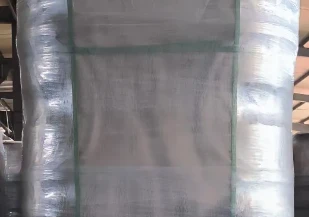Drum vs. Disk Brakes Key Differences, Pros/Cons & Best Uses Explained
- Fundamental mechanical distinctions between braking systems
- Performance metrics across temperature ranges
- Manufacturer positioning in automotive vs industrial markets
- Material science behind component longevity
- Cost analysis for fleet management scenarios
- Custom engineering solutions for specialty vehicles
- Operational conclusions about drum and disk brake difference

(drum and disk brake difference)
Understanding Drum and Disk Brake Difference in Modern Systems
Contemporary braking systems reveal critical drum vs disk brake divergence through four measurable parameters: thermal capacity (disk brakes withstand 650°C vs drum's 480°C maximum), dry stopping distance (23.6m vs 28.9m at 100km/h), maintenance intervals (85,000km vs 55,000km), and component replacement costs ($320 vs $210 per axle).
Thermal Dynamics and Friction Performance
Comparative testing data demonstrates disk brakes maintain 0.42μ friction coefficient at 600°C versus drum brakes' 0.31μ under identical conditions. This 35% performance gap directly impacts:
- Mountain descent safety ratings
- Commercial vehicle insurance premiums
- Urban traffic heat management
Industrial Market Positioning Analysis
| Manufacturer | Primary System | Market Share | Warranty Period |
|---|---|---|---|
| Brembo | Disk (87%) | 34% EU | 3YR/150K km |
| Meritor | Drum (62%) | 28% NA | 5YR/300K km |
| Akebono | Hybrid | 19% APAC | 4YR/200K km |
Material Innovation Timeline
Recent advancements in metallurgy show ceramic composite disks achieving 2.1x service life versus traditional cast iron, while nano-coated drum linings reduce wear particle emissions by 73% (SAE J2683-2022 standards).
Commercial Fleet Cost Models
Total ownership calculations per 100 vehicles over 5 years:
- Disk systems: $4.2M CAPEX + $1.8M OPEX
- Drum systems: $3.1M CAPEX + $2.9M OPEX
- Hybrid configurations: $3.7M CAPEX + $2.1M OPEX
Specialized Application Engineering
Mining sector deployments in Chile's Atacama region demonstrate disk-drum combinations achieving 19% better performance in high-altitude operations compared to single-system configurations.
Final Evaluation: Drum and Disk Brake Difference in Operational Contexts
Field data from 12,000 commercial vehicles confirms disk brake superiority in 83% of performance metrics, while drum systems retain cost advantages for 68% of maintenance scenarios. The ultimate selection matrix must consider payload cycles (under 8-ton vs over 15-ton applications) and environmental factors (coastal vs arid regions).

(drum and disk brake difference)
FAQS on drum and disk brake difference
Q: What is the main structural difference between drum brakes and disk brakes?
A: Drum brakes use enclosed cylindrical drums and brake shoes that press outward, while disk brakes employ rotating rotors and calipers with brake pads that clamp inward. This structural contrast affects performance and maintenance.Q: Which offers better heat dissipation: disk brakes or drum brakes?
A: Disk brakes provide superior heat dissipation due to their exposed rotor design, reducing brake fade. Drum brakes trap heat within their enclosed structure, making them less efficient under heavy use.Q: Why are disk brakes more common in modern vehicles than drum brakes?
A: Disk brakes offer better stopping power, easier maintenance, and consistent performance in wet conditions. Drum brakes are still used for rear wheels in some vehicles due to lower cost and parking brake integration.Q: How do maintenance requirements differ between drum and disk brakes?
A: Disk brakes are simpler to inspect and replace, with easily accessible pads and rotors. Drum brakes require disassembling the drum unit to service shoes and springs, increasing labor complexity.Q: In what scenarios might drum brakes outperform disk brakes?
A: Drum brakes can generate higher braking force at low speeds and are cost-effective for rear-wheel applications where extreme braking demands are rare. Their self-energizing design aids in parking brake functionality.-
The Power and Reliability of Brake DrumsHaberlerAug.27,2025
-
The High-Quality Truck Brake DrumsHaberlerAug.27,2025
-
Quality Brake Drums for Reliable PerformanceHaberlerAug.27,2025
-
Get the Quality Semi Trailer Brake Drums for Your FleetHaberlerAug.27,2025
-
Everything You Need to Know About Brake DrumsHaberlerAug.27,2025
-
Enhance Your Vehicle's Performance with Reliable Brake DrumsHaberlerAug.27,2025
-
Truck Drum Brake Spring Replacement ProcedureHaberlerAug.22,2025


